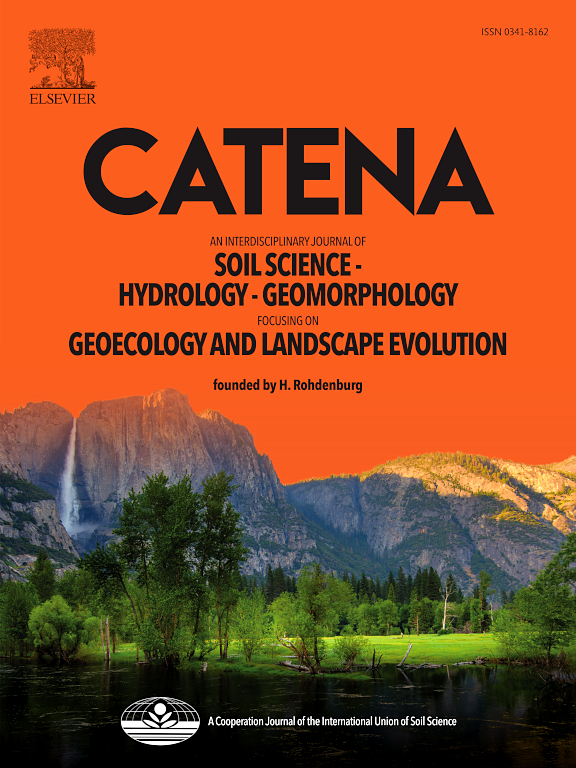An objective methodology for waterlogging risk assessment based on the entropy weighting method and machine learning
IF 5.4
1区 农林科学
Q1 GEOSCIENCES, MULTIDISCIPLINARY
引用次数: 0
Abstract
Waterlogging disasters are one of the most severe and widespread agricultural meteorological disasters. They affect about 15% of land surface globally, causing a significant reduction in crop growth and yields. This paper presents an objective methodology for assessing waterlogging risk, primarily in non-urban, predominantly agricultural areas. The waterlogging risk was assessed by evaluating vulnerability and hazard based on key environmental, anthropogenic, and climatic factors. The weights of factors affecting the waterlogging vulnerability were determined using the entropy weight method (EWM), assuring the objectivity of the overall evaluation results. The obtained waterlogging risk map was validated by comparing it with observed and detected waterlogged sites using Sentinel-2 imagery and Random Forest classification. The key novelties of this study are the use of the entropy weight method to objectively determine the relative importance of factors influencing waterlogging vulnerability, and a two-step validation process which includes field-based comparison and remote sensing validation. The presented methodology was demonstrated in the Vojvodina region, Serbia. The following waterlogging vulnerability factors were used: soil properties, geomorphology, surface depressions, average phreatic water table depth, and land cover. The EWM shows that surface depressions and soil properties have the most significant influence on waterlogging vulnerability. The highest waterlogging hazard classes occur in about 31% of the analyzed territory. The waterlogging hazard was estimated based on water balance for the non-vegetation season and maximum daily precipitation in spring, both modeled using the Generalize Extreme Value distribution function. The highest waterlogging hazard classes occur in about 31% of the analyzed territory. The final risk map shows that the high waterlogging risk occurs in about 11% of the territory. Those are mainly areas in the central, eastern, and southeastern parts of the Vojvodina region, usually along the main watercourses. High agreement between the detected waterlogged areas and the produced waterlogging risk map was achieved, validating the proposed methodology. The presented waterlogging risk assessment methodology is valuable for planning and policy-making for various water management and environmental activities. Although it is demonstrated in Vojvodina, by selecting the appropriate factors of vulnerability and hazard, it can be applied to any other region.
求助全文
约1分钟内获得全文
求助全文
来源期刊

Catena
环境科学-地球科学综合
CiteScore
10.50
自引率
9.70%
发文量
816
审稿时长
54 days
期刊介绍:
Catena publishes papers describing original field and laboratory investigations and reviews on geoecology and landscape evolution with emphasis on interdisciplinary aspects of soil science, hydrology and geomorphology. It aims to disseminate new knowledge and foster better understanding of the physical environment, of evolutionary sequences that have resulted in past and current landscapes, and of the natural processes that are likely to determine the fate of our terrestrial environment.
Papers within any one of the above topics are welcome provided they are of sufficiently wide interest and relevance.
 求助内容:
求助内容: 应助结果提醒方式:
应助结果提醒方式:


